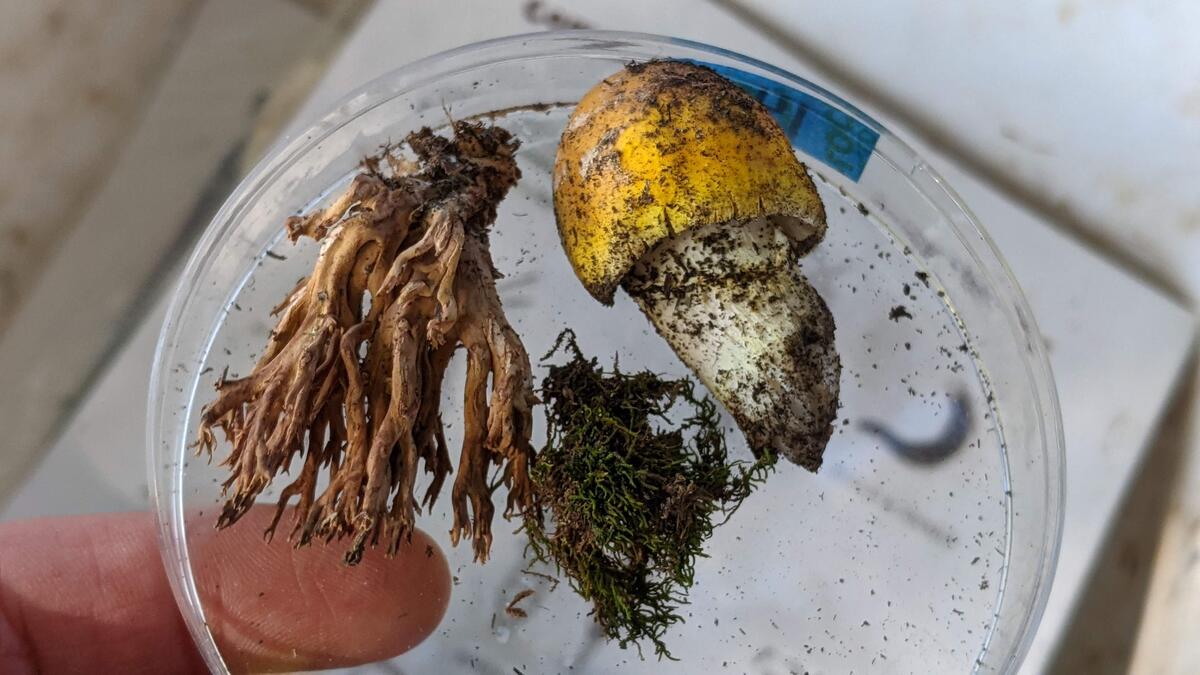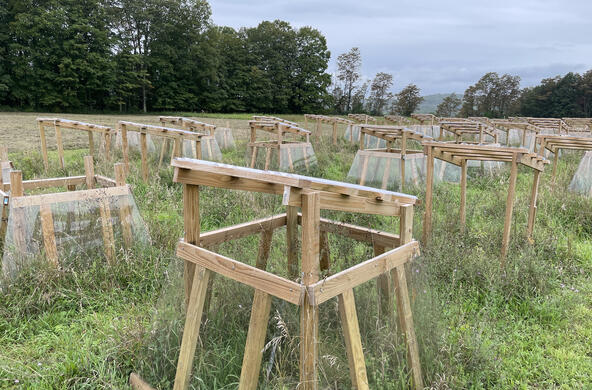Raccoons in the recreational fields, and giant fungi in the front lawn — these are just a few of the discoveries made by middle school students in last fall’s Webutuck Quest Schoolyard Program.
Led by Cary Institute educators Ashley Alred and Rebecca Van Tassell, the program brings schoolyard ecology lessons to fourth through seventh graders in the Webutuck Central School District. Since 2015, Cary has delivered hands-on experiments in insect biodiversity, soil ecology, groundwater infiltration, Lyme disease ecology, and more. The best part: the lessons take place outdoors.
“The students are so excited to go outside,” said Alred. “We work with the teachers to design lessons that support what they’re already teaching, in a way that also connects students with their very local environment. They learn that even their schoolyard is an ecosystem, and there's a lot going on out there, spanning from tiny microorganisms in the soil to the skunks and other mammals who use the fields in the evenings.”

Topics like groundwater infiltration can be complex when they’re taught in the classroom. But when students see how water flows into the soil in different locations in their schoolyard, the concept becomes easier to grasp.
These lessons not only leverage Cary Institute’s expertise in ecosystem science, but also the tools of the trade — such as microscopes, animal cameras, and carbon dioxide probes — that the schools might not otherwise be able to access. Webutuck Central School District serves substantial low-income and underserved populations.
Funding for the program is made possible through a Quest grant from the Berkshire Taconic Community Foundation. Cary educators are interested in expanding the program to other local school districts, for whom enrichment funds are also available.

The Webutuck Quest Schoolyard Program began in 2015 as an effort to install a nature trail in the school yard, to support science learning and get the kids outdoors more often. Over the years, the program’s lesson plans have evolved to support teacher needs and to align with state and national educational standards. (Lesson plans are available online.)
The program consists of two visits per grade level. The first visit sets the stage: the students learn any necessary background knowledge and set up their experiments. On the second visit, the class analyzes the data they collected. Each grade level explores a different research topic.
In 2023, fourth graders set up pitfall traps to explore insect biodiversity. They dug a hole in the ground, put a yogurt cup inside, and covered it with twigs and sticks. The next morning, they went back to see what kinds of insects fell into the cup.

Meanwhile, fifth graders investigated soil microbes and insects involved in decomposition, and sixth graders studied water and how it moves through the environment. Seventh graders set up camera traps to track which animals visit their school yards over the course of a week, learning about mammal biodiversity and how it’s linked with tick ecology and Lyme disease.
Based on teacher feedback, Alred is redesigning the sixth grade lesson plan. Next year’s sixth graders will learn about temperature variations in the environment as part of their weather and climate unit.

Though the lessons are pre-planned, the students have a lot of agency in deciding where to set up the trail cams or water infiltration tubes, for example, based on where they think the animals will be and where water might flow quickly versus slowly.
The experiments are open-ended and lead to discoveries in many forms. Like last year, when Alred asked the fifth graders to look for signs of decomposition under some old oak trees in the school yard.
“One student found a huge hen-of-the-woods mushroom that was growing out of the base of one of the oak trees,” she said. “They didn't know what it was, but it was really great because it was an obvious sign of decomposition. And so it was just a natural way to make those connections that I hadn't even planned on.”

Once, during a soil ecology investigation, Alred heard some of the fifth graders shouting, “Miss Ashley, come see these birds! They’re doing something weird!” The students had happened upon a pair of killdeer who had built a nest on the ground, and were trying to lure the students away from their eggs by pretending to be injured. The experience sparked conversations about animal behavior. The class put out flags to protect the nest, and several teachers and students continued to monitor the nest throughout the fall.
Cultivating this kind of curiosity is a central goal of the Webutuck Quest Schoolyard Program. “We hope it will help them recognize that any place — no matter how seemingly mundane — can be an intriguing ecosystem,” said Alred.






